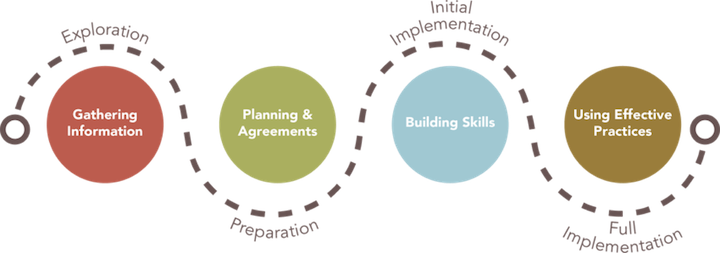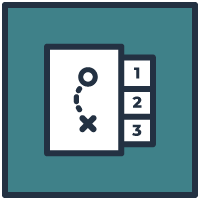Implementing Evidence-Based Practices for Children Who Are Deaf-Blind: A TA Reference Guide

This guide is intended for use by state deaf-blind projects to inform the provision of TA to early intervention providers, school-based teams, and families.* It is based on a synthesis and adaptation of implementation science and technical assistance literature and input from state deaf-blind project personnel based on their experiences providing TA to a diverse set of stakeholders.
The guide is organized by implementation phase. Within each phase, suggested strategies are arranged roughly in the order in which they are likely to be used under ideal circumstances. It would be a mistake, however, to see this as a step-by-step cookbook for providing TA. Implementation is a nonlinear process with activities that often overlap. It is common to circle back to strategies from an earlier phase or to compress activities from more than one phase into a single interaction with a team.
In addition, the guide was developed as a reference to meet the needs of deaf-blind project professionals dealing with a variety of situations and who have different levels of expertise. Some readers may find it most helpful to dip into specific sections to find ideas or tools to help meet an immediate need or to learn about a specific aspect of TA delivery. Others may wish to go through the whole guide from start to finish (this would be particularly useful for new personnel or for projects that want to thoroughly evaluate their current processes for providing child-focused TA).
Many of the strategies have associated "Advice from Colleagues" and "Tools & Resources." The latter category consists of links to factsheets developed specifically for this guide, tools contributed by state deaf-blind projects, and other useful materials.
* Throughout the guide, TA recipients are primarily referred to as “the team.”
Published 2017 by National Center on Deaf-Blindness
